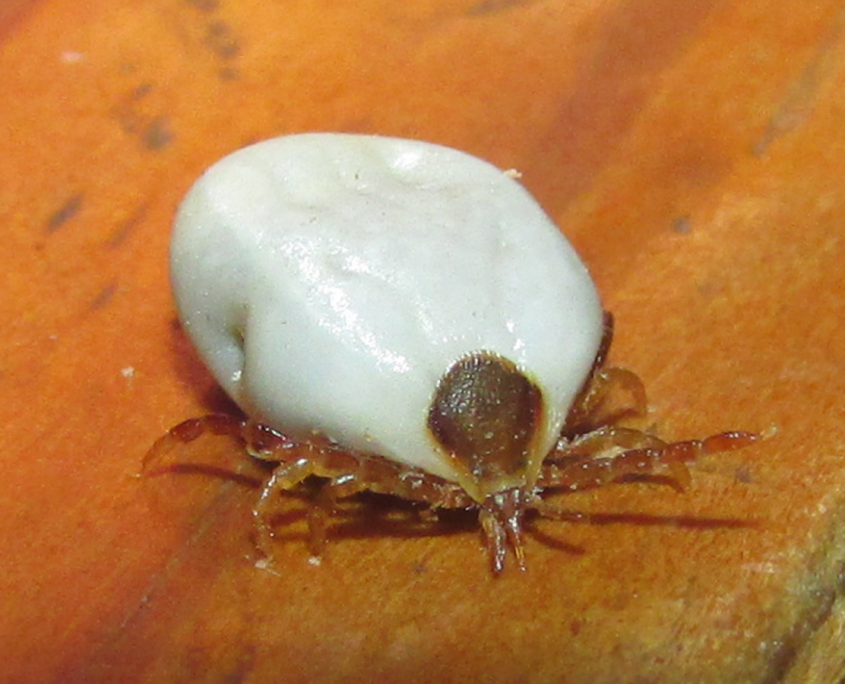Tick Paralysis and How to Protect Your Pets
What is Tick Paralysis?
Tick paralysis is a potentially life-threatening condition caused by the paralysis tick (Ixodes holocyclus). These ticks are prevalent along the Eastern Seaboard of Australia, with cases peaking during Spring to Autumn. However, due to the weather patterns in south-east Queensland, paralysis ticks can be found year-round. These ticks inhabit bushland and grassy areas, and are found on native wildlife. This means that even if your pet rarely leaves your yard, they remain vulnerable to paralysis tick infestations.

Why are Paralysis Ticks So Dangerous?
Paralysis ticks carry a neurotoxin in their saliva. When these ticks attach and feed on your pet, some of this toxin enters their bloodstream. This toxin disrupts the connections between nerves and muscles, resulting in muscle weakness and, ultimately, complete paralysis.
What are the Signs of Tick Paralysis?
Your pet may exhibit one or more of the following signs of tick paralysis, which can occur in any order:
- Altered vocalisations (bark or meow).
- Gagging sounds or vomiting.
- Wobbliness or weakness in the hind legs.
- Coughing.
- Inability to blink.
- Laboured breathing or a ‘grunting’ noise.
Unfortunately, in severe cases, paralysis can lead to the aspiration of stomach contents into the lungs, the development of corneal ulcers, and potentially result in respiratory fatigue and death.


How is Tick Paralysis Treated?
Tick paralysis is entirely preventable, so prevention is always the best approach. However, if you discover a paralysis tick on your pet, the following treatment is recommended:
- Tick Anti-serum Transfusion: Administering tick anti-serum helps neutralize any remaining toxin in the system. Unfortunately, it does not eliminate what is already bound in the system, and it may take between 3-7 days for the paralysis to resolve.
- Supportive Care: Depending on the severity of paralysis, pets may require intravenous (IV) fluids, eye lubrication, antibiotics, and oxygen therapy. In severe cases, specialised care clinics may perform mechanical ventilation in an induced coma or provide ‘life support.’
How Can I Prevent Tick Paralysis?
Several options are available for preventing paralysis ticks. Oral treatments are used to kill ticks when they attach, while tick collars help prevent tick attachment. Generally, oral treatments are more effective. A new product, Bravecto Quantum, is expected to be released in December 2023. It offers long-lasting tick and flea control through a one-year injection.
Treatments for Dogs
| Product | Duration of Activity | Treats |
|---|---|---|
| Bravecto Quantum (injection) | Yearly | Ticks, mites and fleas. COMING DECEMBER 2023 |
| Bravecto Chew | 3 monthly | Ticks, mites and fleas |
| Bravecto Spot on (topical) | 3 monthly | Ticks, mites and fleas |
| Nexgard | 28 days | Ticks, mites and fleas |
| Nexgard Spectra | 28 days | Ticks, mites and fleas. Intestinal and heartworms. |
| Simparica | Monthly | Ticks, mites and fleas |
| Simparica Trio | Monthly | Ticks, mites and fleas. Intestinal and heartworms. |
| Serestro Collar (topical) | 8 months | Ticks and fleas |
| Credelio Plus | Monthly | Ticks, mites and fleas. Intestinal and heartworms. |
| Frontline Plus (topical) | 2 weeks | Two weeks protection for paralysis ticks, 4 weeks protection for fleas. |
| Advantix (topical) | Monthly | Ticks and fleas |
| Aristopet (topical) | Monthly | Two weeks protection for paralysis ticks, 4 weeks protection for fleas. |
| The Big 5 | Monthly | Ticks, mites and fleas. Intestinal and heartworms. |
Treatments for Cats
| Product | Duration of Activity | Treats |
|---|---|---|
| Seresto Collar (topical) | 8 months | Ticks and fleas |
| Revolution Plus (topical) | Monthly | Ticks, mites and fleas. Intestinal and heartworms. |
| Bravecto Plus Spot On (topical) | 10 weeks | Ten weeks for ticks, fleas and mites, 12 weeks for intestinal and heartworms. |
| Bravecto Spot On (topical) | 12 weeks | Ticks and fleas |
Written by Dr Danielle McGowan



